Table of Contents
IBPS PO Mains Quantitative Quiz
Quantitative Aptitude can enhance your performance as a whole. All you need to do is clear your basics first and practice more and more. Quantitative Aptitude is a subject that helps you to boost your score and confidence. Every year IBPS comes with changes in the pattern of questions on Quantitative Aptitude which makes it difficult for students to decode in the examination hall. Giving mocks and Quizzes on a regular basis will help you to crack every change in the pattern. Adda 247 gives daily quizzes for practice as the IBPS PO Mains is scheduled for 30 November. Here is the IBPS PO mains Quantitative Aptitude Quiz of 30th October 2019.
Directions (1-5): Study the given graph Carefully and answer the following questions.
The pie chart given below shows the no. of candidates appeared in different exams in a given year. The line graph shows the percentage of passed candidates in that exam.
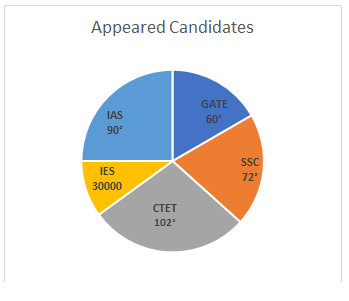
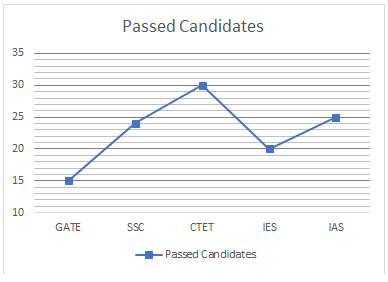
Q1. Candidates failed in IES exam are what approximate percent of the candidates passed in SSC and CTET exams together?
(a) 45%
(b) 60%
(c) 75%
(d) 65%
(e) 70%
Q2. Passed candidate in Gate exam are how much more or less than appeared candidates of SSC Exam?
(a) 55200
(b) 62500
(c) 52500
(d) 56500
(e) 48500
Q3. If candidates who got selected from each exam (GATE, SSC, CTET, IES, IAS) are 50%, 60%, 40%, 30%, 40% respectively, then find total candidates who passed but don’t get selected.
(a) 44375
(b) 39360
(c) 49062
(d) 33189
(e) 40260
Q4. Find the ratio between failed candidates of IES and SSC exam together to the appeared candidates of GATE and IAS exam together.

Q5. Passed candidates of SSC exam are what approximate percent more or less than failed candidates of CTET exam?
(a) 72%
(b) 80%
(c) 84%
(d) 76%
(e) 68%
Q6. Pankaj calculates his profit percentage on the selling price whereas Chandan calculates his profit on the cost price. They find that the difference of their profit is Rs. 135. If the selling price of both of them are the same, and Pankaj gets 30% profit and Chandan gets 25% profit, then find their selling price.
(a) Rs. 1250
(b) Rs. 1150
(c) Rs. 1450
(d) Rs. 1350
(e) none of these
Q7. Manoj got Rs 6000 as his share out of the total profit of Rs 9000 which he and Ramesh earned at the end of one year. If Manoj invested Rs 20000 for 6 months, whereas Ramesh invested his amount for the whole year, the amount invested by Ramesh was
(a) Rs 60000
(b) Rs 10000
(c) Rs 40000
(d) Rs 5000
(e) None of these
Q8. The population of a town decrease by 10% during the first year, decrease by 15% during the second year and again decreases by 20% during the third year. If the present population of the town is 15300 then what was the population of the town three years ago?
(a) 24000
(b) 24500
(c) 25000
(d) 25400
(e) None of these
Q9. The average age of a husband and wife was 23 years when they were married 5 years ago. The average age of the husband, the wife and a child who was born during the interval, is 20 years now. How old is the child now?
(a) 9 months
(b) 1 year
(c) 3 years
(d) 4 years
(e) None of these
Q10. A sum of Rs 1085 is lent out in two parts on Simple interest in such a way that the interest on one part at 9% for 3 years is equal to that on another part at 18% for 2 years. Find the two sums.
(a) Rs 620, Rs 465
(b) Rs 600, Rs 485
(c) Rs 520, Rs. 565
(d) Rs 630, Rs 655
(e) None of these
Directions (11-15): In each of these questions, two equations (I) and (II) are given. You have to solve both the equations and give answer

(a) if x>y
(b)if x≥y
(c) if x<y
(d)if x ≤y
(e) if x = y or no relation can be established between x and y.

(a) if x>y
(b)if x≥y
(c) if x<y
(d)if x ≤y
(e) if x = y or no relation can be established between x and y.

(a) if x>y
(b)if x≥y
(c) if x<y
(d)if x ≤y
(e) if x = y or no relation can be established between x and y.

(a) if x>y
(b)if x≥y
(c) if x<y
(d)if x ≤y
(e) if x = y or no relation can be established between x and y.

(a) if x>y
(b)if x≥y
(c) if x<y
(d)if x ≤y
(e) if x = y or no relation can be established between x and y.
solutions:


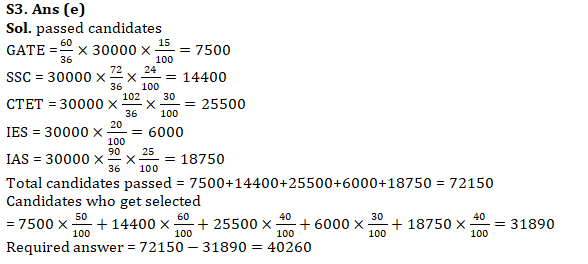


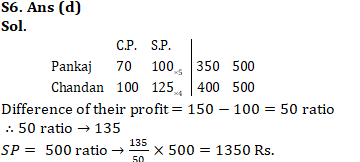

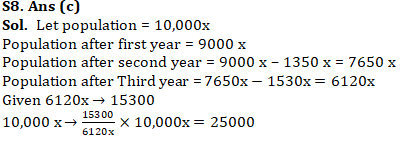

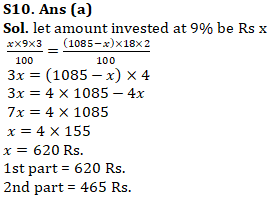
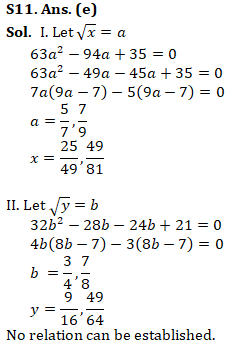
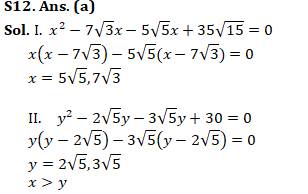
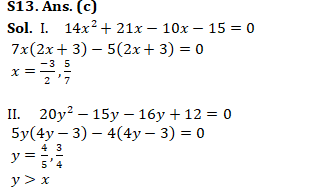
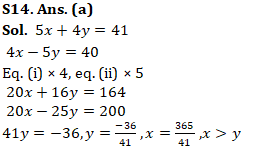
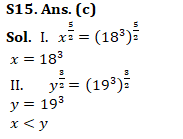
For 200+ most important arithmetic questions
- Quantitative Aptitude Study Notes for Bank Exams
- 100 MCQs Data Interpretation | Download Free PDF’s of DI
- Quantitative Aptitude Questions for all Competitive Exams

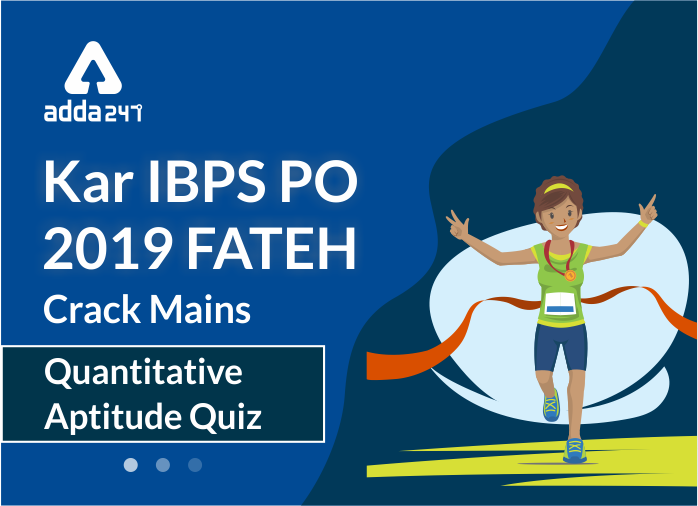



 GA Capsule for SBI Clerk Mains 2025, Dow...
GA Capsule for SBI Clerk Mains 2025, Dow...
 The Hindu Review October 2022: Download ...
The Hindu Review October 2022: Download ...
 SBI Clerk Prelims Result 2025 Out, Direc...
SBI Clerk Prelims Result 2025 Out, Direc...







